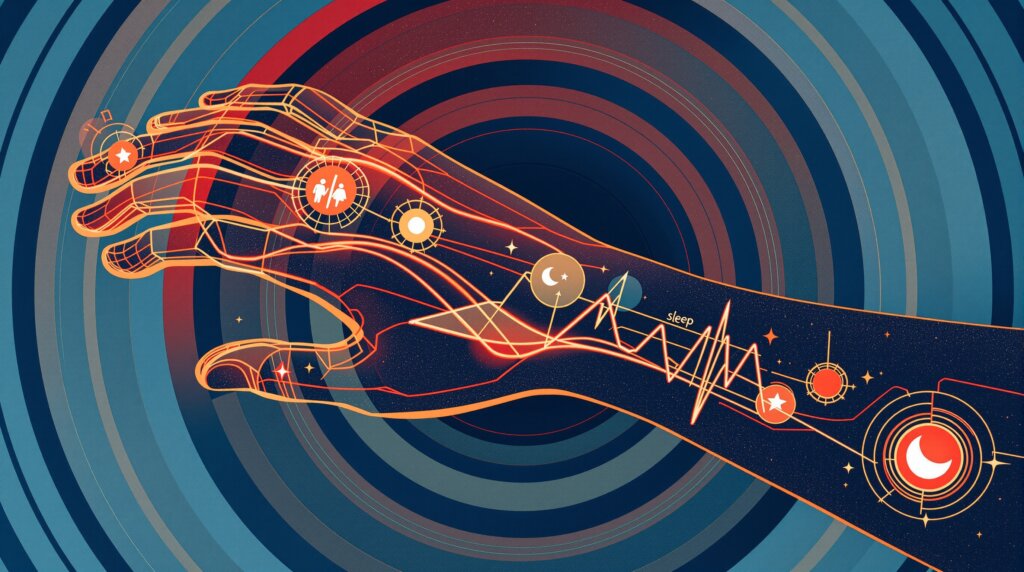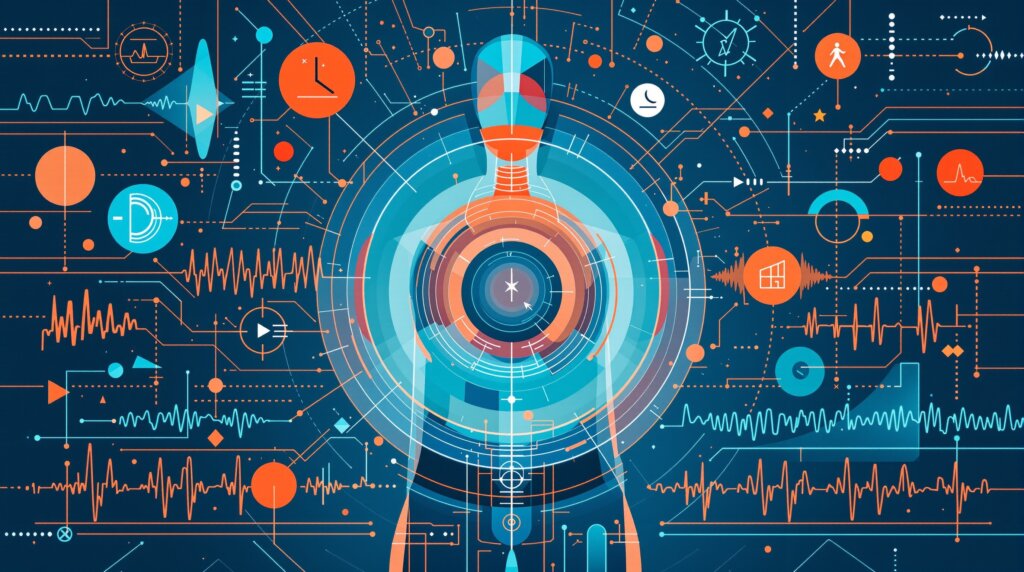The Growing Role of Wearables in Heart Health
Understanding Cardiovascular Disease in the Modern Era
Cardiovascular disease remains the leading cause of death globally, claiming nearly 18 million lives annually according to the World Health Organization. What makes this statistic particularly sobering is that many of these deaths could potentially be prevented through early detection and lifestyle interventions. The challenge has traditionally been that cardiovascular problems often develop silently, with symptoms appearing only after significant damage has occurred.
Enter wearable technology—a rapidly evolving field that’s transforming how we approach cardiovascular health monitoring. These devices, ranging from sophisticated smart rings to advanced fitness bands, are increasingly capable of tracking physiological markers that may indicate early signs of cardiovascular issues. While they’re not intended to replace professional medical diagnosis, wearables offer something unprecedented: continuous, real-world monitoring that can capture patterns and changes that might otherwise go unnoticed until a routine doctor’s visit.
The potential is compelling, though it’s important to approach this technology with realistic expectations. Wearables excel at detecting trends and encouraging healthy behaviors, but they sometimes struggle with accuracy in certain populations or specific clinical scenarios. Nevertheless, as sensor technology advances and data analytics become more sophisticated, these devices are becoming valuable tools in the broader strategy of cardiovascular disease prevention.

How Wearable Sensors Monitor Your Heart
The Technology Behind Cardiovascular Monitoring
Modern wearables employ several key technologies to monitor cardiovascular health, with photoplethysmography (PPG) being the most common. This optical sensor technology uses light to detect blood volume changes in your capillaries, allowing devices to measure heart rate, heart rate variability, and even blood oxygen saturation. The technology works by emitting light through your skin and measuring how much light is absorbed or reflected back—variations that correspond to your heartbeat.
Beyond basic heart rate monitoring, many wearables now incorporate electrocardiogram (ECG) capabilities, though these tend to be more limited compared to clinical-grade equipment. Some devices also include accelerometers and gyroscopes to track physical activity patterns, which provide crucial context for interpreting cardiovascular data. For instance, an elevated heart rate during exercise is expected, while the same reading at rest might warrant attention.
The accuracy of these sensors has improved significantly, though they’re not always reliable in all conditions. Factors like skin tone, tattoos, excessive movement, or poor device fit can sometimes affect readings. Additionally, the algorithms that process this raw sensor data are constantly being refined, but they may not perform equally well across all populations or age groups.
What’s particularly valuable about wearable sensors is their ability to collect data continuously in real-world settings. Unlike a brief measurement in a clinical environment, wearables capture how your cardiovascular system responds to daily stressors, sleep patterns, exercise, and other lifestyle factors that significantly impact heart health.
Prevention Through Continuous Monitoring and Behavior Change
Encouraging Heart-Healthy Habits
Research has demonstrated that wearables can be particularly effective at promoting the lifestyle changes that form the foundation of cardiovascular disease prevention. Studies involving patients with coronary artery disease have shown promising results: participants using wearables often increased their daily step counts significantly and demonstrated improved exercise capacity over time.
The mechanism appears to be multifaceted. First, wearables provide immediate feedback on physical activity levels, creating a natural motivation to move more throughout the day. Many users find that seeing their real-time step count or heart rate encourages them to take the stairs instead of the elevator or go for a brief walk during lunch breaks. This continuous awareness can lead to meaningful increases in overall physical activity—a crucial factor in maintaining cardiovascular health.
Perhaps more importantly, wearables excel at tracking trends over time. Users can observe how their resting heart rate decreases as their fitness improves, or how their heart rate variability changes in response to stress management techniques. This longitudinal data often provides powerful motivation to maintain healthy behaviors, as users can see tangible evidence of their progress.
For individuals with existing cardiovascular conditions, wearables have shown potential in reducing rehospitalizations and improving secondary prevention efforts. The continuous monitoring capability allows for early detection of concerning changes, potentially enabling timely medical intervention before a serious cardiac event occurs.
However, it’s worth noting that the effectiveness of wearables in promoting behavior change isn’t universal. Some users may experience “data fatigue” or become overly focused on metrics rather than overall well-being. The key seems to be finding a balance between awareness and obsession, using the data as a guide rather than an absolute authority on health status.
Early Warning Systems: Risk Assessment Through Wearable Data
Machine Learning and Predictive Analytics
One of the most exciting developments in wearable technology for cardiovascular health is the integration of machine learning algorithms that can analyze patterns in longitudinal data to identify potential risk factors. These systems can detect subtle changes in heart rhythm, identify irregular patterns that might indicate arrhythmias, or notice gradual shifts in resting heart rate that could signal developing cardiovascular issues.
The approach typically involves collecting massive amounts of data from individual users over extended periods, then using sophisticated algorithms to identify patterns that correlate with cardiovascular events. For example, changes in heart rate variability combined with sleep quality metrics and activity levels might collectively indicate increased cardiovascular risk, even when each individual metric appears normal.
Some wearables now offer features that can detect atrial fibrillation, a common arrhythmia that significantly increases stroke risk. When these devices identify irregular heart rhythms, they can alert users to seek medical evaluation. While not always perfectly accurate, studies suggest that these features can identify previously undiagnosed cases of atrial fibrillation that might otherwise go undetected for years.
Real-time monitoring for heart failure symptoms represents another frontier. Changes in activity tolerance, sleep patterns, or resting heart rate might indicate worsening heart failure before traditional symptoms become apparent. This early warning capability could potentially prevent hospitalizations and improve quality of life for individuals with chronic cardiovascular conditions.
Despite these advances, it’s important to recognize that current prediction algorithms are still evolving. False positives can cause unnecessary anxiety, while false negatives might provide false reassurance. The technology works best when integrated with regular medical care rather than used as a standalone diagnostic tool.
Navigating Challenges and Limitations
Understanding the Boundaries of Wearable Technology
Device accuracy remains a primary concern, particularly in populations with darker skin tones, where optical sensors may be less reliable. Additionally, the algorithms that interpret sensor data are often trained on datasets that may not represent the full diversity of the population, potentially leading to less accurate results for certain groups.
Data overload presents another challenge. Wearables generate enormous amounts of information, but distinguishing meaningful health signals from normal physiological variation can be difficult for both users and healthcare providers. A slight increase in resting heart rate might indicate developing illness, increased stress, dehydration, or simply normal day-to-day variation. Without proper context and interpretation, this data can sometimes create more confusion than clarity.
Privacy concerns also loom large in the wearable space. Cardiovascular health data is highly sensitive, and many users worry about how this information might be used by insurance companies, employers, or other third parties. The regulatory landscape is still evolving, leaving some uncertainty about data protection and usage rights.
Socioeconomic disparities in wearable adoption represent a significant limitation for population-level cardiovascular disease prevention. The communities most at risk for cardiovascular disease often have the least access to wearable technology, potentially exacerbating existing health inequalities. Until these devices become more accessible and culturally appropriate for diverse populations, their impact on reducing overall cardiovascular disease burden may be limited.
Finally, the integration of wearable data into clinical workflows remains challenging. Many healthcare providers lack the training or infrastructure to effectively interpret and act on wearable-generated data, limiting the potential for these devices to improve clinical outcomes.
The Path Forward: Clinical Integration and Future Possibilities
Building Evidence and Establishing Standards
The future of wearables in cardiovascular disease prevention depends largely on establishing robust clinical evidence through large-scale, well-designed studies. Current research often involves relatively small populations or short follow-up periods, making it difficult to draw definitive conclusions about long-term effectiveness. Multi-center clinical trials with diverse populations and extended follow-up will be essential for validating the clinical utility of wearable-based interventions.
Regulatory frameworks also need to evolve to keep pace with technological advances. Clear guidelines for device accuracy standards, data privacy protection, and clinical integration will help ensure that wearables can fulfill their potential while maintaining user safety and trust. The development of standardized evaluation frameworks will enable better comparison between devices and more informed decision-making by both consumers and healthcare providers.
Education for healthcare providers represents another crucial element. As wearable technology becomes more sophisticated, clinicians will need training on how to interpret and act on wearable-generated data. This includes understanding the limitations of different devices, recognizing when wearable data warrants clinical attention, and integrating this information with traditional diagnostic approaches.
Conclusion: A Promising Tool in the Prevention Arsenal
Wearable technology offers genuine promise for transforming cardiovascular disease prevention, though we’re still in the early stages of realizing this potential. These devices excel at encouraging healthy behaviors, providing continuous monitoring in real-world settings, and potentially identifying early warning signs of cardiovascular problems. The ability to track trends over time and provide personalized feedback represents a significant advance over traditional, episodic health monitoring approaches.
However, current limitations in accuracy, accessibility, and clinical integration remind us that wearables are tools to complement, not replace, established approaches to cardiovascular care. The most effective prevention strategies will likely combine wearable technology with regular medical care, lifestyle counseling, and evidence-based treatments.
As sensor technology continues advancing and artificial intelligence becomes more sophisticated, wearables may indeed become indispensable tools in personalized cardiovascular care. The key will be maintaining realistic expectations while working to address current limitations, ensuring that these powerful technologies can benefit all populations at risk for cardiovascular disease.
Frequently Asked Questions
Can a smartwatch detect heart problems?
How accurate are wearable ECGs and heart rate monitors?
Which wearables are best for monitoring heart health?
What heart metrics should I track to help prevent cardiovascular disease?
Can wearables predict a heart attack or stroke?



